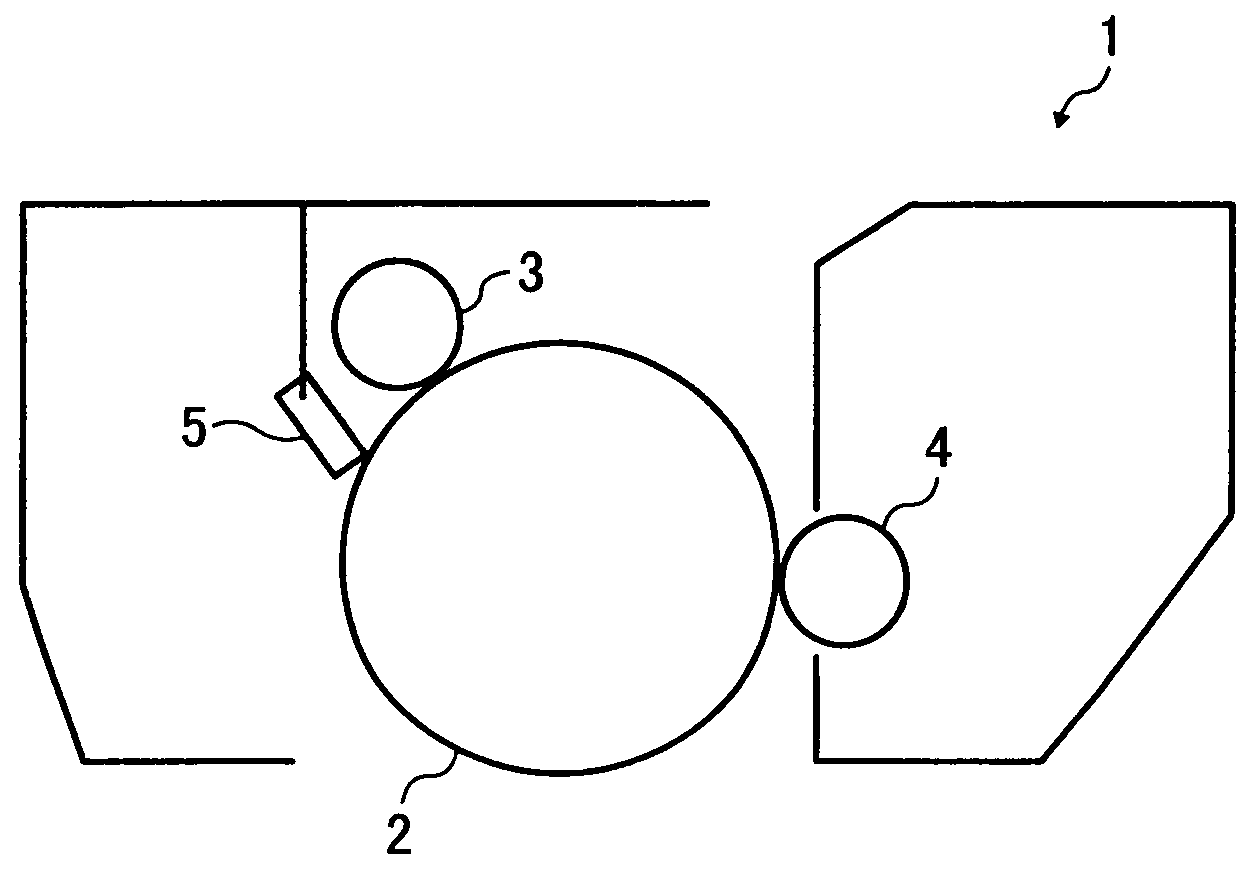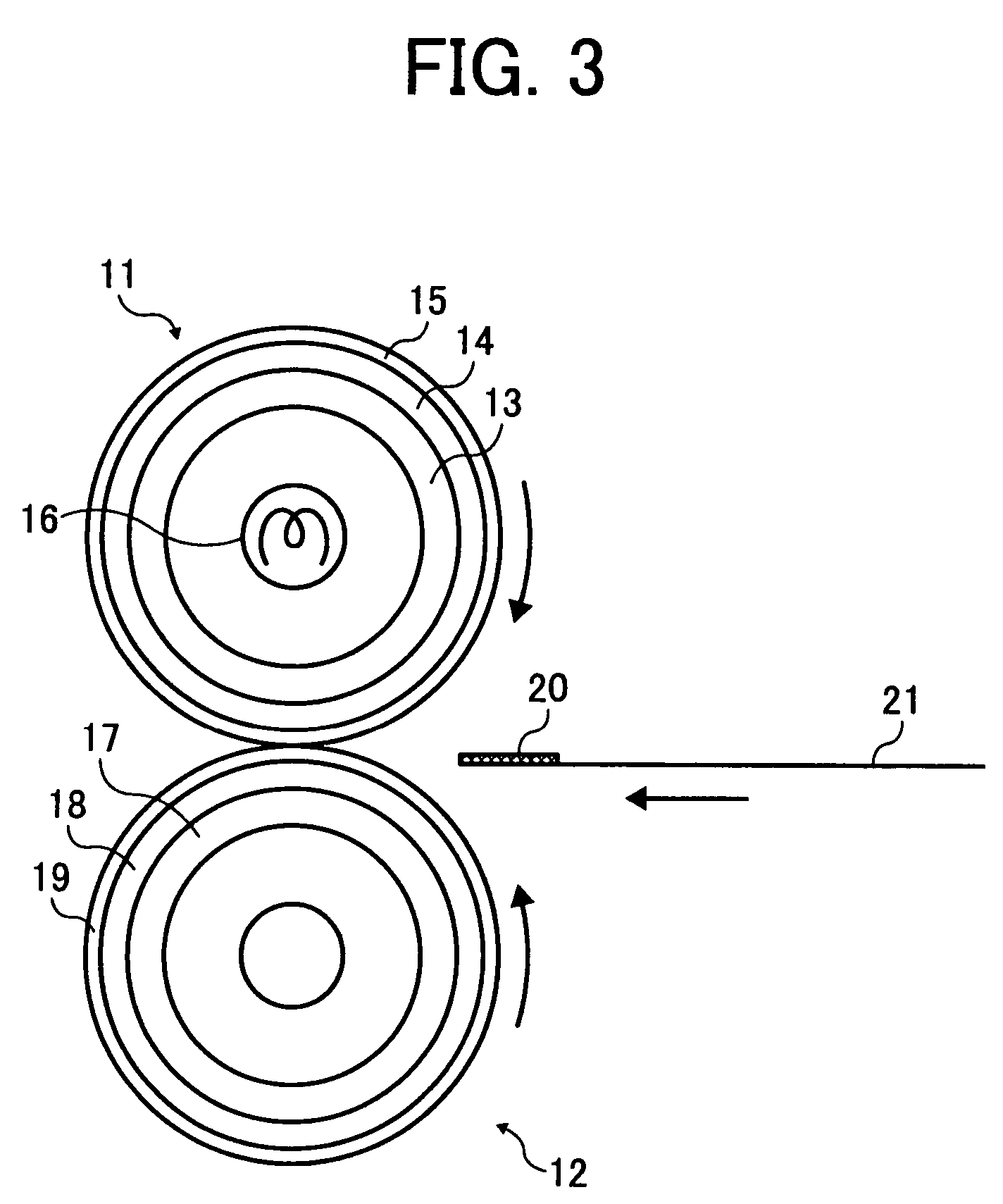Toner and method of manufacturing the same
a technology of toner and manufacturing method, applied in the field of toner, can solve the problems of uneven density, pulverized toner is manufactured with an extremely large amount of energy, and energy increases, and achieves the effects of good combination of high temperature preservability, strong stress resistance, and sufficient chargeability and durability
- Summary
- Abstract
- Description
- Claims
- Application Information
AI Technical Summary
Benefits of technology
Problems solved by technology
Method used
Image
Examples
example 1
Preparation of Toner Particles
[0244]The following recipe is sufficiently mixed and stirred in a stainless flask using HOMOGENIZER (ULTRA TURRAX, manufactured by IKA group) and heated to 48° C. in a heater oil bath while stirring to agglomerate particles. When it is confirmed that the particle diameter is 5.6 μm, pH of the system is adjusted to be 6.0 by 0.5 mol / litter aqueous solution of sodium hydrate and the system is heated to 94° C. while continuing stirring. In the middle of temperature rising to 94° C., pH of the system is down to about 5.0 and maintained as is. When the circularity is 0.970, the resultant is cooled down, filtered and sufficiently washed with deionized water followed by separation of solid and liquid by Büchner funnel suction filtration. The resultant is re-dispersed in 3 litter of deionized at 40° C. followed by 15 minute stirring and washing. This washing is repeated 5 times and solid and liquid is separated by Büchner funnel suction filtration. Next, drying...
example 2
Preparation of Toner Particle 2 Toner particle 2 having a volume average particle diameter of 5.7 μm and average circularity of 0.972 is prepared from the following recipe in the same manner as in Example 1 suitably changing temperature.
[0249]
Latex (1) of non-crystalline polyester resin150partsLatex (1) of polyester resin and styrene-acryl resin90partscontaining waxLiquid dispersion B-1 of cyan pigment10partsPolyaluminum chloride0.12partsPurified water420parts
[0250]Durability of single component development is evaluated by the same method as Example 1. The result is shown in Table 1.
example 3
Preparation of Toner Particle 3
[0251]Toner particle 3 having a volume average particle diameter of 5.5 μm and average circularity of 0.974 is prepared from the following recipe in the same manner as in Example 1 suitably changing temperature.
[0252]
Latex (1) of non-crystalline polyester resin230partsLatex (2) of polyester resin and styrene-acryl resin40partscontaining waxLiquid dispersion B-1 of cyan pigment10partsPolyaluminum chloride0.16partsPurified water390parts
[0253]Durability of single component development is evaluated by the same method as Example 1. The result is shown in Table 1.
PUM
| Property | Measurement | Unit |
|---|---|---|
| volume average particle diameter | aaaaa | aaaaa |
| volume average particle diameter | aaaaa | aaaaa |
| size | aaaaa | aaaaa |
Abstract
Description
Claims
Application Information
 Login to View More
Login to View More - R&D
- Intellectual Property
- Life Sciences
- Materials
- Tech Scout
- Unparalleled Data Quality
- Higher Quality Content
- 60% Fewer Hallucinations
Browse by: Latest US Patents, China's latest patents, Technical Efficacy Thesaurus, Application Domain, Technology Topic, Popular Technical Reports.
© 2025 PatSnap. All rights reserved.Legal|Privacy policy|Modern Slavery Act Transparency Statement|Sitemap|About US| Contact US: help@patsnap.com



